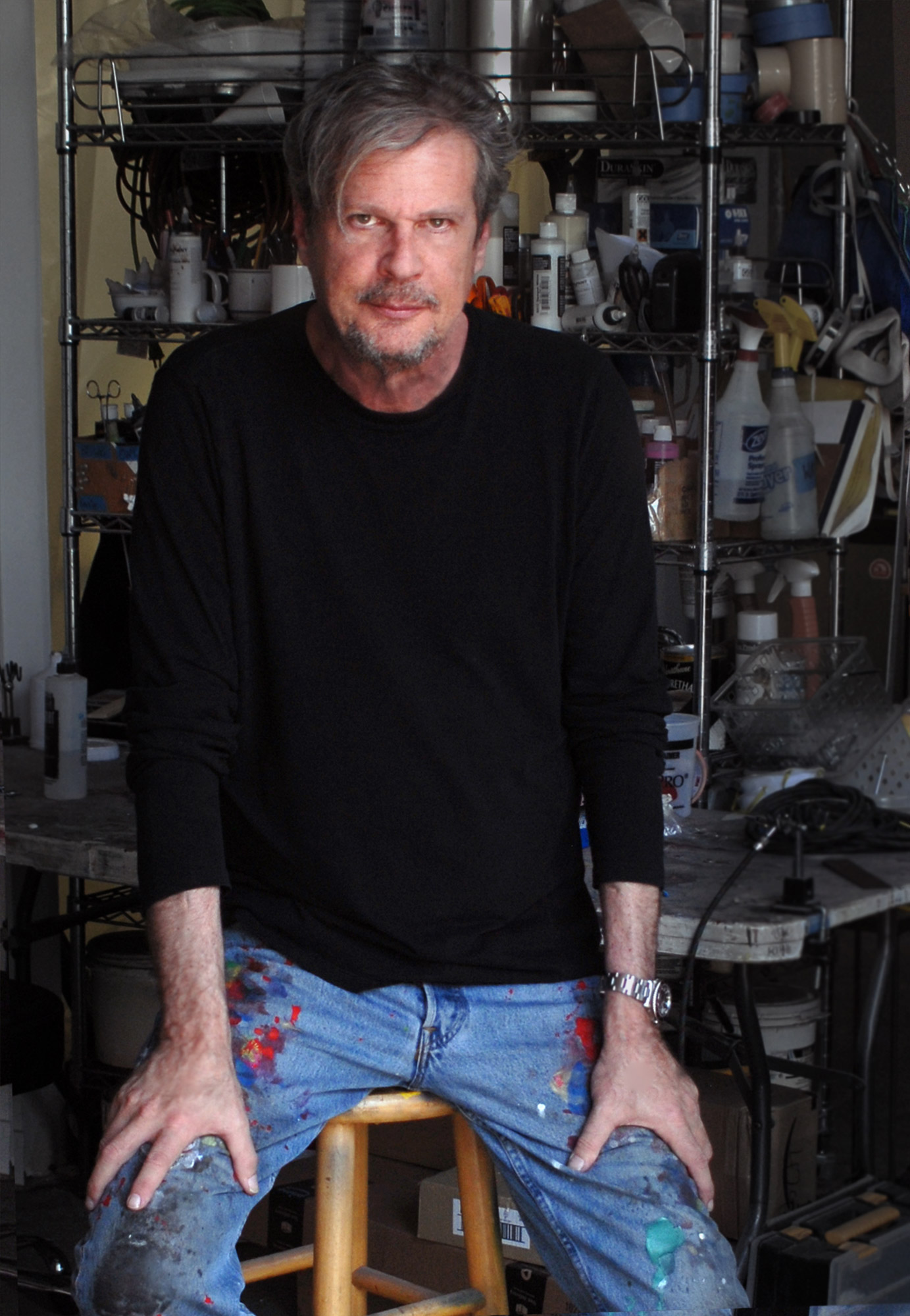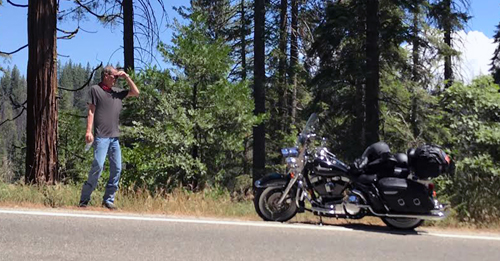Michel Tabori was born in Paris in 1956 and grew up in New York. He spent the better part of the last forty years working as a director, producer and cinematographer, living and working all over the world. Tabori began working as a visual artist a little over ten years ago, and is currently based in Los Angeles. The artist’s rapid maturity and clarity of vision in this medium are due, in part, to the fact that he has incorporated his cinematic expertise and visual creativity to his current process.
Tabori’s paintings depict symmetric transformations of fast moving action, landscapes and intimate portraits as seen and experienced both directly and through reflections of the subject’s surroundings. To start, pigment is applied to flat canvas mounted on panel and then again on layers of polymer resin, which throw tints and shadows onto the layers below them as more resin is added. The resin’s optical qualities develop a depth of field that deepens the work. This technique also magnifies colors otherwise impossible to achieve by paint on flat canvas alone. As Tabori explains, “The surface of the canvas is never the primary focus. Nor is the use of resin as a finish. Instead, it is about continually shifting relationships between optics and pigment that interact not only on the canvas, but also with the reflections of light, movement and obscuring forms in the surrounding environment.”
As a cinematographer, Tabori was challenged by the task of taking three-dimensional subjects and depicting them in a life-like way, hopefully with some impact, on the two-dimensional surface of the movie screen. This was done with the careful use of light, shadows and of course, optics. He now utilizes these same techniques when working with color and resin on flat art. The results place the observer more into the work rather than just seeing it from a distance. Eventually he increased this effect by removing the work from the wall itself, and then painting and adding resin to free standing, two-sided panels that protrude into the space around it, thereby achieving an actual third dimension. Not just flat painting and not quite sculpture, the results allow the observer to be incorporated into the center of the work itself, intensifying the encounter, while creating a constantly changing experience.
Tabori’s more recent work came about while driving through densely wooded, western forests at high speed on a Harley Davidson. Endless configurations of passing multi-shaped greens, reds, oranges, yellows and blues of varying shades and tones, along with constantly changing, misty shadows and rainy reflections merged with intense rays of California sunlight or bright beams of penetrating moonlight. Conveying this in his paintings, they become a representation of the interplay of all these components. They re-create a feeling of motion through nature, in a way that the casual, stationary observer could never encounter. The higher the speed, the more motion there is, the more powerful the experience becomes.


